- News
- Reviews
- Bikes
- Accessories
- Accessories - misc
- Computer mounts
- Bags
- Bar ends
- Bike bags & cases
- Bottle cages
- Bottles
- Cameras
- Car racks
- Child seats
- Computers
- Glasses
- GPS units
- Helmets
- Lights - front
- Lights - rear
- Lights - sets
- Locks
- Mirrors
- Mudguards
- Racks
- Pumps & CO2 inflators
- Puncture kits
- Reflectives
- Smart watches
- Stands and racks
- Trailers
- Clothing
- Components
- Bar tape & grips
- Bottom brackets
- Brake & gear cables
- Brake & STI levers
- Brake pads & spares
- Brakes
- Cassettes & freewheels
- Chains
- Chainsets & chainrings
- Derailleurs - front
- Derailleurs - rear
- Forks
- Gear levers & shifters
- Groupsets
- Handlebars & extensions
- Headsets
- Hubs
- Inner tubes
- Pedals
- Quick releases & skewers
- Saddles
- Seatposts
- Stems
- Wheels
- Tyres
- Health, fitness and nutrition
- Tools and workshop
- Miscellaneous
- Tubeless valves
- Buyers Guides
- Features
- Forum
- Recommends
- Podcast
£2,200.00
VERDICT:
The best Tripster yet, and they've all been great
Lovely ride
Versatile build and mounting options
Large tyre clearance
Looks great
Seatpost diameter limits your options a bit
Weight:
9,500g
Contact:
At road.cc every product is thoroughly tested for as long as it takes to get a proper insight into how well it works. Our reviewers are experienced cyclists that we trust to be objective. While we strive to ensure that opinions expressed are backed up by facts, reviews are by their nature an informed opinion, not a definitive verdict. We don't intentionally try to break anything (except locks) but we do try to look for weak points in any design. The overall score is not just an average of the other scores: it reflects both a product's function and value – with value determined by how a product compares with items of similar spec, quality, and price.
What the road.cc scores meanGood scores are more common than bad, because fortunately good products are more common than bad.
- Exceptional
- Excellent
- Very Good
- Good
- Quite good
- Average
- Not so good
- Poor
- Bad
- Appalling
The Kinesis Tripster ATR is a founding father of the new gravel/adventure bike scene. ATR stands for Adventure, Tour, Race; this third iteration of the bike feels like it's come of age in terms of its adventure capability whilst keeping the comfort, road manners and reasonably light weight it's always had for covering distance at speed. It is an excellent frameset, around which you can build any number of different bikes.
People have been riding drop-barred bikes on unmade surfaces for as long as anyone can remember. When the Pyrenees were introduced into the Tour de France in 1910 all of the legendary climbs – Peyresourde, Aspin, Tourmalet, Aubisque – were all little more than cart tracks, so it's not new.
> Find your nearest dealer here
Specific gravel bikes are, though: head back 10 years and you'll see very little evidence of them. If you wanted an all-surface drop-bar bike, it was a cyclo-cross bike, with race geometry. It wasn't really until about 2013 that gravel and adventure bikes – with disc brakes, room for bigger tyres, and more relaxed geometry for longer rides – really started to gain traction.
This Outside article from 2012 lists just three of the newfangled breed. The next year the first Tripster ATR was launched, and we reviewed it. And we loved it. Seven years later, we're two iterations down the line, the gravel market has exploded, and a lot has changed. But the Tripster ATR endures and – spoiler alert – I still love it.
In essence, the Tripster ATR V3 remains the same thing as it's always been: a multi-surface, multi-purpose drop bar bike made from cold-drawn, butted, seamless 3Al/2.5V titanium tubing. Like the V2 before it, the new bike has 12mm thru-axles – now with a neat removable lever – and flat mount discs.
Our 60cm review bike has a stack of 627mm and a reach of 407mm, and a 71 degree head tube. That stack-to-reach of 1.54, combined with the reasonably slack front end, gives a bike that's probably best described as easy-going. It's not so upright that the drops don't give a reasonably efficient position, and it's slack enough that rougher surfaces don't make it skittery and send it off line.
Kinesis has done a fair bit of work on the smaller sizes, exaggerating the slope of the top tube and extending the reach. They're designed to work with a shorter stem, and Kinesis claims that the frame design gives a better standover for shorter riders, and less toe overlap, which the numbers back up.
The ride
I've had the chance to review all three versions of this bike, and the ride properties have changed very little in that time. This new V3 bike is built from an entirely new tubeset, but the ride is familiar, and remains everything you could want from a bike that, by its nature, can be built up to do very different types of riding.
The Tripster ATR V3 is, simply, a lovely thing to ride. It has the sort of unhurried calm that translates into distance at a reasonable speed. Mostly I've been riding the Tripster on 36mm Challenge Strada Bianca TLR tyres, which are big enough to cope with proper gravel roads – which we're lucky enough to have a bit of round here – while not giving too much away on the flat. Set up like that, with a Shimano GRX Di2 groupset and a flared bar, the Tripster feels like a bike that's at home on the road, but comfortable well beyond it too.
It's easy to say a frame is comfy when you're running cushy big-chamber slicks at 40psi, and as always it's difficult to pin down which bits of the bike are doing what in terms of the ride. When I swapped out the posh Reynolds AR41X wheels for some Mavic Aksium Elites, and pumped up the 28mm tyres they were running nice and hard, that did add a bit more of an edge to the ride. But the underlying feel of the bike is exactly what you want from a titanium frame: the Tripster ATR has a dynamic feel that's hard to exactly define, but it feels lovely to ride. There's a springiness to it that gives the ride character without feeling like it's robbing you of momentum.
The geometry doesn't lend itself to a particularly racy feel, although it's definitely no slouch, but when you sling a leg over the Tripster ATR, clip in, and push off, it feels like the kind of bike that could cope whatever the length of the ride, and the longer the better. I've done some big rides on the previous two framesets and there's basically no bike I'd rather be riding when hobbling out of a petrol station shop in the middle of the night, with hundreds of kilometres done and hundreds still to do. I've yet to rack up a really big ride on the V3 bike, but the feel when you're riding it is exactly the same: it just wants to keep on going.
With a sub-10kg weight in this build, it's very capable on the hills, and the reasonably low overall weight contributes to the bike's lively feel. Swapping out the Reynolds carbon wheels for the Aksiums gives more of a stable feel that's also very enjoyable and well suited to road miles.
Frame details
There are a raft of minor changes to the frameset that are worthy of note, and show that Kinesis has really put some thought into this new version of the bike.
The bottom bracket shell has been redesigned: it's still an external threaded design, which is always welcome, but the internal diameter has been increased so you can run Di2 cables internally even if you're using cranks with a 30mm axle.
The stays have all been reworked, both to increase compliance and to add a bit more heel clearance.
The seat tube weld area has been enlarged to beef up that section of the frame; Kinesis expects more of the V3 ATR bikes to be carrying loads on the frame.
The internal routing and cable ports have been tweaked to make the job a bit simpler. I was a bit unsure about the switch to internal routing when I tested the V2 Tripster, but having used it as a long-term test bike with various groupsets I have to say it's never been an issue. Okay, if you're needing to replace a cable in the field, miles from anywhere, it'll be a ball-ache, and if your plans for your adventure riding include getting a long way off the beaten track then an externally routed frame might be better. That being said, my review bike doesn't have any cables anyway, just hydraulic hoses and Di2 wires, and if I manage to damage either of those beyond repair mid-ride it's going to make scant difference whether they're inside the frame or not.
The seatpost remains a 31.6mm diameter, when many adventure bikes these days use a 27.2mm for more compliance. Again, this is more about the ability of the frame to carry loads than anything else.
'We think it's now even more important to keep the larger 31.6 internal seat tube for improved strength gains in the critical areas of seat tube to bottom bracket and seat tube to top tube cluster,' Kinesis told me when I asked about the decision.
'An appetite for riders to explore and a renaissance in bike touring (bike packing) over recent years has put more physical demand on frames, so the overall strength of the frame has never been more important. We expect the Tripster to handle rough terrain and heavy loads; we also offer a full range of sizing up to 62cm and the larger frame sizes certainly benefit from the larger seat tube size. The bottom bracket area is also critical in any frame and the 34.9mm external diameter seat tube contributes to stability there. We can maintain ride comfort from our careful selection of butted and profiled titanium tubes.'
Certainly the ATR V3 doesn't struggle to be a comfortable and compliant ride. If you're heading further off the beaten track and you want to add a suspension seatpost then you'll find your options are a bit more limited in the bigger size without recourse to a reducing shim. Some – the dependable Cane Creek Thudbuster, for example – come in a 31.6mm diameter. Others – the Redshift Shockstop and the Specialized CG-R, to name two – are only available in 27.2mm.
One thing that's changed in the time the Tripster has been in production is tyre and wheel sizing. The original bike was built to run 700C wheels, and you could fit a maximum 40mm tyre. To be honest, at the time you'd have been hard pressed to find anything bigger. The V3 bike will take a 45mm tyre but it's also happy running on 650B wheels, and anything up to a 50mm tyre will fit.
That opens you up to some rubber that's a lot more aggressive, and that changes the nature of the bike, slowing it down on the blacktop but bringing a new level of off-road capability. To go with that, the Tripster has undergone a bit of a transformation in terms of carrying capacity.
Firstly, Kinesis has moved to triple bosses in the main triangle. That means you get two possible mounting points for your bottle cage, and setting the bottles lower gives more room for a frame bag.
Secondly, there are full luggage mounts on the new Range fork that's part of the frameset. You could fit low-rider racks if you wanted, or something like a Widefoot rack that allows you to lash various bits of your bikepacking arsenal to the fork legs.
The fork itself is brand new, and Kinesis has moved back to selling the Tripster ATR as a frame and fork rather than just as a frame. It's well matched to the bike and capable on and off road.
There are a couple of more cosmetic changes, too: the head tube moves away from the hourglass design to a more modern-looking tapered tube, and the tube decals get an oil-slick anodised finish.
The ATR V3 looks lovely, and it stays looking that way: that's one of the most appealing things about titanium. You'll never chip the paintwork, and generally speaking a hose and a brush is all you need to get it back to showroom finish. If you scratch the tubing, a bit of elbow grease and some wire wool will buff out most indiscretions.
Build
This review is of the frameset not the whole bike and, like I've said above, the Tripster ATR can be built into a multitude of different bikes from a fast tourer to a full-on off-road adventurer. But I'll quickly run through the original spec.
My Tripster was built with a single-ring Shimano GRX Di2 groupset, with a 40-tooth chainring and an 11-40 cassette. That's a 360% gear range which I've previously used for everything up to a 400km audax and found to be perfectly good for mid-paced road riding and less aggressive off-roading. You'll be spinning the 40x11 pretty quickly if you're trying to chase your mates down any steep descents, and the two-tooth gaps between the big gears might be an issue for you if you like a narrow cadence range.
For a more adventure build you could drop the GRX chainset and fit a single-ring mountain bike one instead to drop the gear range considerably. If you wanted smaller jumps and a bigger top gear then a double chainring would be the better option. GRX Di2 (separate review coming) is a super groupset though, with improved lever feel from the hoods and faultless performance.
Finishing kit is mostly from Thomson: there's a Masterpiece Carbon seatpost, a Carbon Dirt Drop Bar and an Elite X4 stem. Again, look out for separate reviews of the stuff we haven't already done.
The bike originally came with Reynolds AR41X wheels and Challenge Strada Bianca 36mm tubeless tyres, but it's worn everything from Mavic Aksiums with 28mm rubber to 650B wheels and IRC Boken off-road tyres.
Repente supplied the Spyd 2.0 saddle and the bar tape.
Value and conclusion
Back in 2013 the original Tripster ATR was a stone-cold bargain at £1,500 for the frameset. Skip forward to now and it'll cost you £2,200 for the frame, fork and headset, so it's significantly more expensive than it originally was, and a bit more than the V2, which worked out at around £2,100 depending on which fork you went for.
It's £99 less than the Enigma Escape which is a similar beast to the ATR, albeit with external routing for the cables which is generally cheaper to produce. The J.Laverack GRiT and the Vaaru GTA are both a similar price, too.
> Buyer’s Guide: 20 of the hottest 2020 & 2021 gravel bikes
If you want to spend less then there are options, for example the Van Nicholas Rowtag (review coming soon) at £1,630 for the frame only. If you want to spend more, there's plenty of choice too. Moots, Seven, Enigma custom... take your pick.
Maybe it's not the steal it once was, but the Kinesis Tripster ATR is a genuinely great bike that's everything from a fast audaxer to a fully laden bikepacker, depending on how you build it. It's fun and engaging, well thought out and beautiful. I can fully recommend it. Again. Overall, this is the best one yet.
Verdict
The best Tripster yet, and they've all been great
road.cc test report
Make and model: Kinesis Tripster ATR V3 frameset
Size tested: 60
Frameset
Tell us what the frameset is for, and who it's aimed at. What do the manufacturers say about it? How does that compare to your own feelings about the bike?
Kinesis says:
Destined for Worldwide Adventure.
The ATR legacy is built upon foundations of exploration, new experiences, and expanding horizons.
The new ATR vol.3 titanium bike frame is more beautiful and more capable than ever, thanks to several refinements over the much-loved and highly respected v2, and the addition of our new carbon Range fork with additional load carrying ability.
The ATR is designed with input from our Kinesis UK ambassadors across the globe, informing the details that make a difference out on the road and trail. So whether your next journey is a Himalayan expedition or a British local overnighter, the ATR vol.3 adventure bike frameset is the perfect complement to your spirit of adventure.
State the frame and fork material and method of construction
Kinesis lists:
New Tube Set: Cold drawn seamless 3Al/2.5V titanium tubing and machined headtube, for ultimate strength and rider comfort.
New Kinesis Range Fork: Newly designed load carrying carbon fork for even bigger adventure. As with the frame, compatible with 700x45c tyres.
New Seatstay/Seattube Junction: Greater weld area for additional strength and improved aesthetics.
Improved Cable Routing: Exit window on downtube and cable outer stops replace the downtube opening and plastic cable guide for lower maintenance. Frame compatible with all mechanical and electronic groupsets.
GW Switch Lever Thru Axles: Clean and simple design with a removable lever.
New Laser Etched Decal: A touch of custom styling and colour on the minimal branding.
Anti-Shock Tuning: Flattened seat stays for improved vibration damping.
Kinesis Rider Fit Geometry: Better fit and more consistent handling for a wider range of riders. Two smallest sizes have a semi sloping top tube for greater seat post extension and greater comfort. Longer reaches (recommended for use with shorter stems) mean there is less toe overlap on smaller sizes.
Overall rating for frameset
9/10
Tell us about the build quality and finish of the frame and fork?
Beautifully made and finished, the new oil-slick decals look great too.
Tell us about the geometry of the frame and fork?
Endurance geometry with a stack-to-reach of 1.54 and a head angle of 71° in the 60cm size tested.
How was the bike in terms of height and reach? How did it compare to other bikes of the same stated size?
Perfect for me, for all kinds of riding. If I was using it purely off-road I might size down to a 58 for a slightly tighter wheelbase.
Riding the bike
Was the bike comfortable to ride? Tell us how you felt about the ride quality.
It's a great frameset, comfortable and agile. The ride quality of a titanium bike done well is hard to beat, and this is a great example.
Did the bike feel stiff in the right places? Did any part of the bike feel too stiff or too flexible?
The ideal mix of springy and taut.
How did the bike transfer power? Did it feel efficient?
Yes, it feels very efficient. You don't get the monolithic on/off feel of a carbon race bike but it doesn't feel like anything is wasted.
Was there any toe-clip overlap with the front wheel? If so was it a problem?
No issues.
How would you describe the steering? Was it lively neutral or unresponsive? Neutral.
Tell us some more about the handling. How did the bike feel overall? Did it do particular things well or badly?
The 71° head angle is relaxed enough for easy cruising without feeling too sluggish.
Rate the bike for efficiency of power transfer:
9/10
Rate the bike for acceleration:
8/10
Rate the bike for sprinting:
6/10
Rate the bike for high speed stability:
9/10
Rate the bike for cruising speed stability:
10/10
Rate the bike for low speed stability:
9/10
Rate the bike for flat cornering:
9/10
Rate the bike for cornering on descents:
9/10
Rate the bike for climbing:
8/10
How did the build components work with the frame? Was there anything you would have changed?
The build is high spec and I don't think I'd change anything. For a more off-road-focused build I'd opt for 650B wheels and if I was aiming to ride most of the time on road I'd probably go for a double chainring.
Your summary
How does the price compare to that of similar products in the market, including ones recently tested on road.cc?
At £2,200 it's comparable with similar bikes from Enigma, Vaaru and J.Laverack. You can spend a fair bit less, or a LOT more, if you want, but the Kinesis feels like it's more or less on the money.
Did you enjoy riding the bike? Yes
Would you consider buying the bike? Yes
Would you recommend the bike to a friend? Yes
Rate the bike overall for performance:
9/10
Rate the bike overall for value:
6/10
Use this box to explain your overall score
The Triptser ATR V3 is the best Tripster yet, and that's up against some stiff competition. Lots of tweaks but at its heart it's the same smooth-riding mile-eater with off-road capability.
About the tester
Age: 47
I usually ride: whatever I'm testing... My best bike is: Kinesis Tripster ATR, Merida Scultura, Dward Design fixed
I've been riding for: Over 20 years I ride: Every day I would class myself as: Experienced
I regularly do the following types of riding: road racing, time trialling, cyclo cross, commuting, touring, club rides, sportives, general fitness riding, fixed/singlespeed, mtb, Mountain Bike Bog Snorkelling, track
Dave is a founding father of road.cc, having previously worked on Cycling Plus and What Mountain Bike magazines back in the day. He also writes about e-bikes for our sister publication ebiketips. He's won three mountain bike bog snorkelling World Championships, and races at the back of the third cats.
Latest Comments
- mdavidford 1 sec ago
You seem to have bought into this misleading quote:...
- Smac9 14 min 27 sec ago
I think the 2.5 star rating is a bit mean . I own one of these and have no issues using them. I am not a chemical engineer so cannot verify the eco...
- David9694 13 min 44 sec ago
Hi all I'm looking for advice on what constitutes vigilantism (and what doesn't) and whether you get called "pedo" etc if you practise it. ...
- David9694 38 min 1 sec ago
Faussett Hill, Canterbury, reopens after car crashes into fence belonging to The Granville pub...
- AidanR 56 min 38 sec ago
That's my thinking too. Why would I be concerned about my visibility by night, but not by day?
- Rome73 59 min 17 sec ago
No, Lime pay the councils to operate in the borough, not the other way around. They will also pay for the infrastructure - how much will depend on...
- dh700 2 hours 21 min ago
If you believe the Dutch have solved this problem via construction, explain why their cyclist fatality rate remains so disturbingly high. They are...
- Rendel Harris 2 hours 46 min ago
The compulsory third-party insurance in NZ only covers personal injury; property damage requires extra insurance that isn't compulsory, so that's...
- andystow 4 hours 6 min ago
This is the bike I used for my LEJoG last year. After that, it deserved a treat: new powder coat and new wheels after the Hunt wheels cracked at...





















































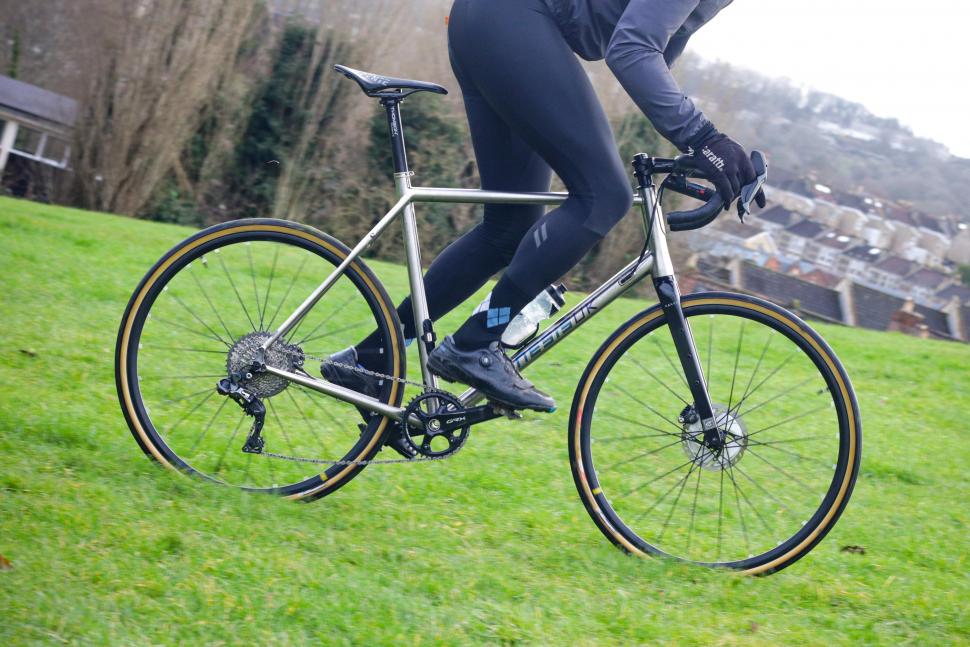


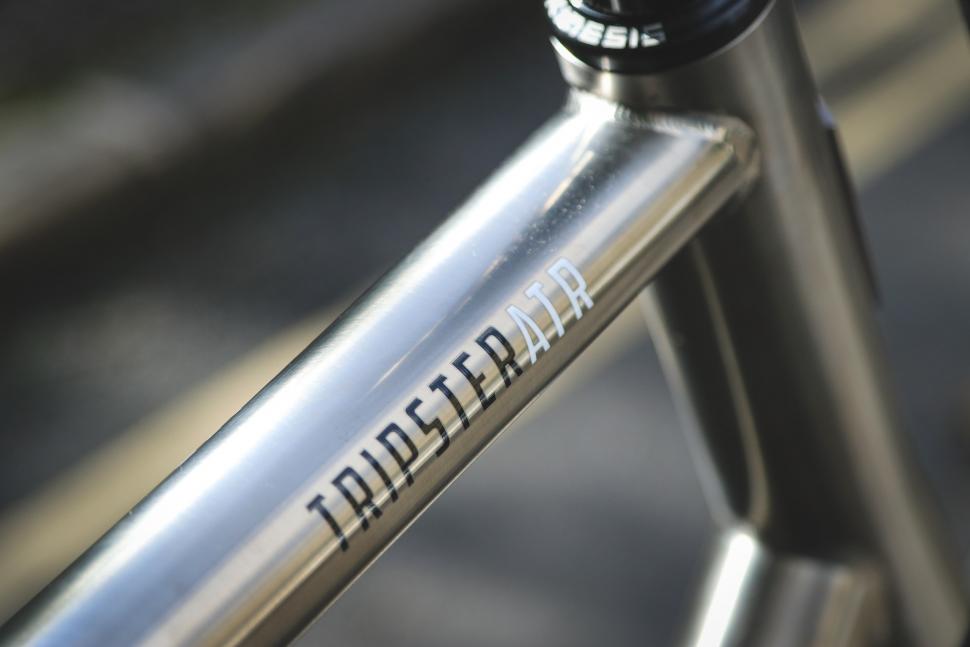
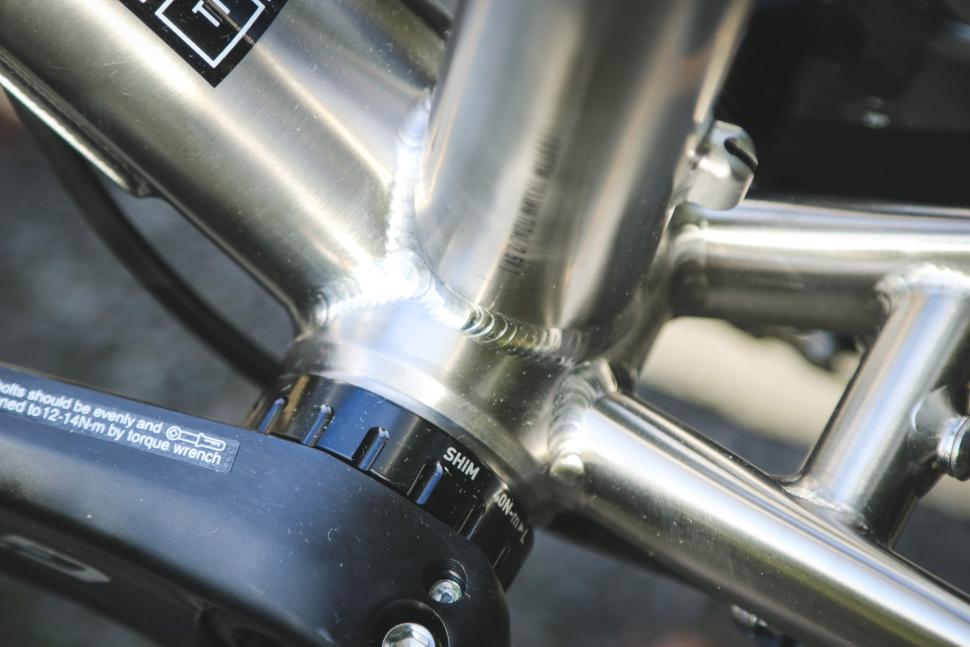
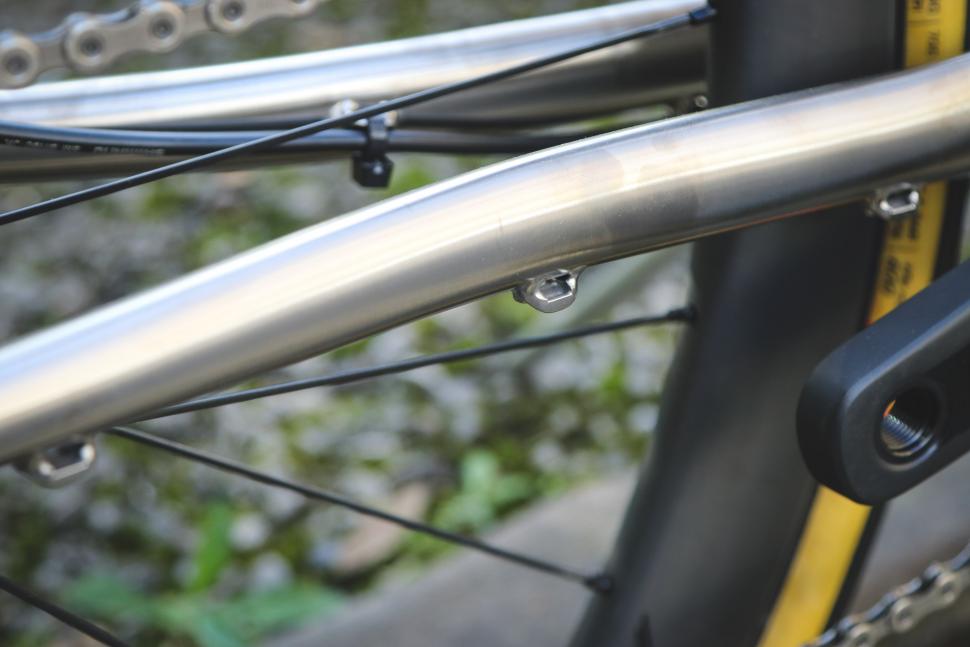
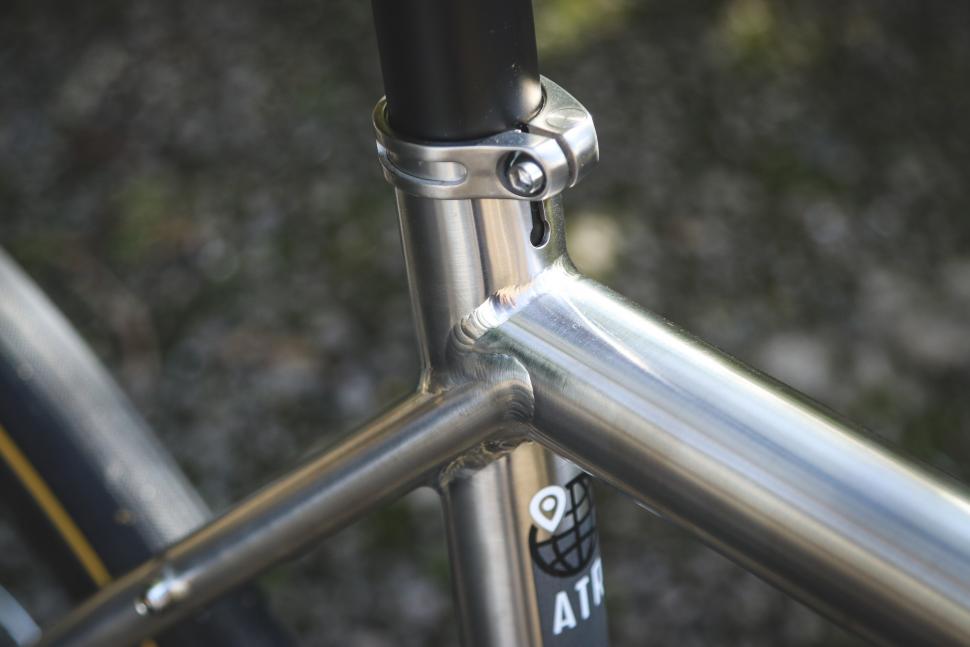
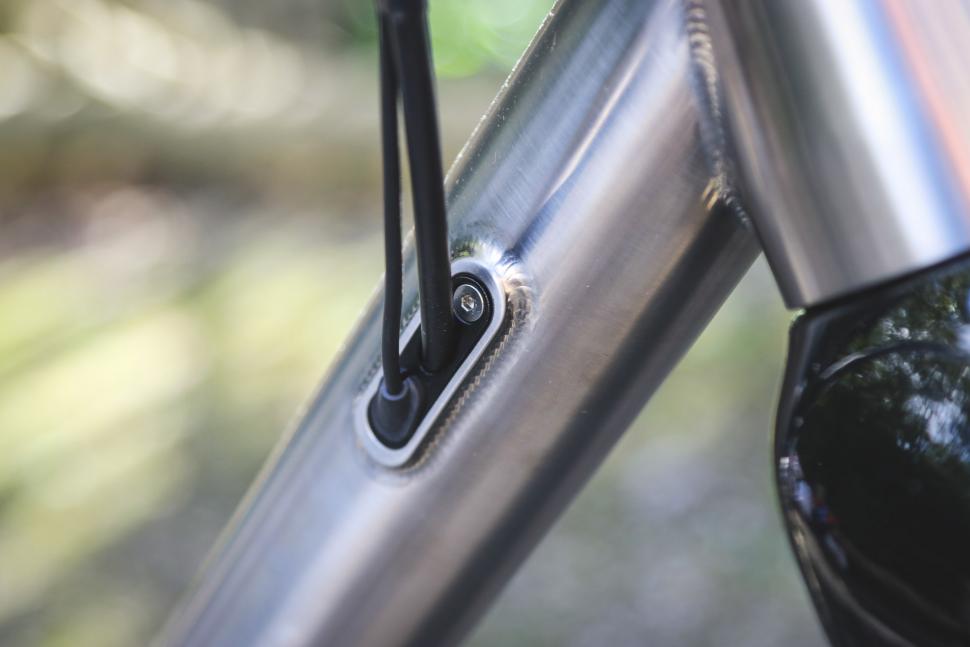
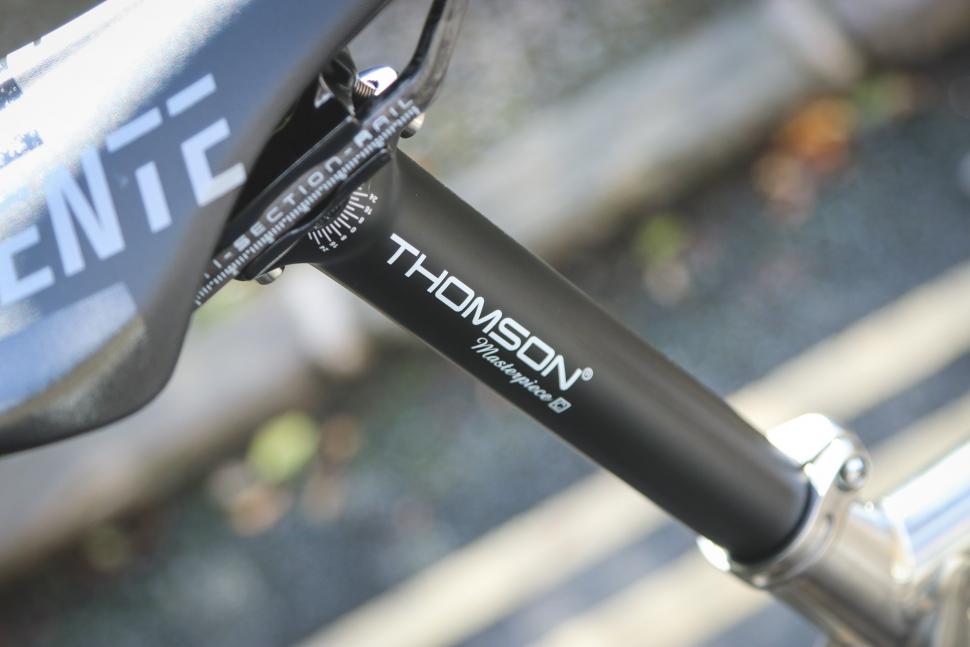
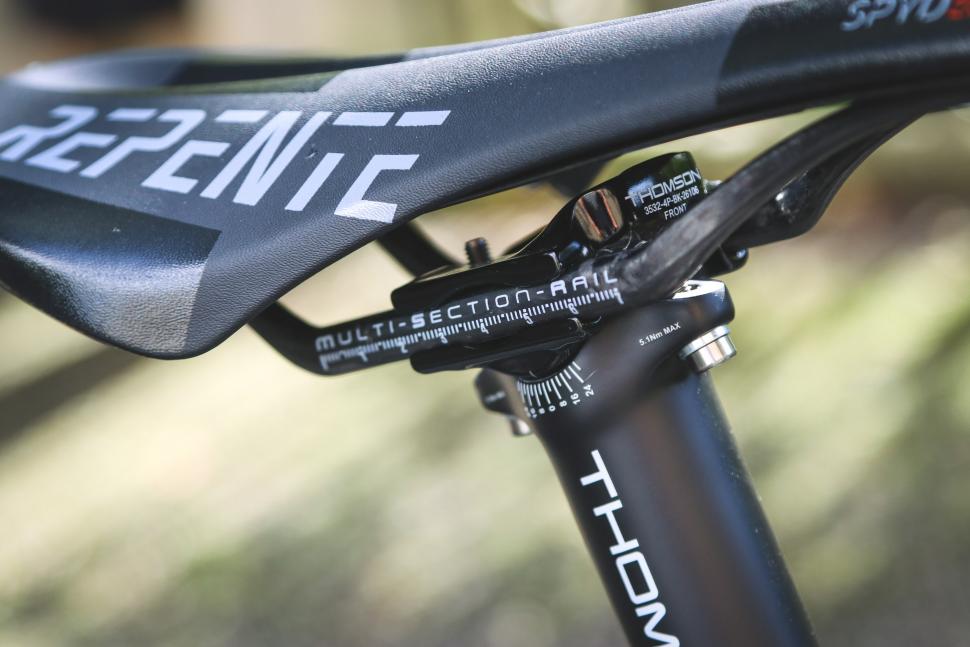


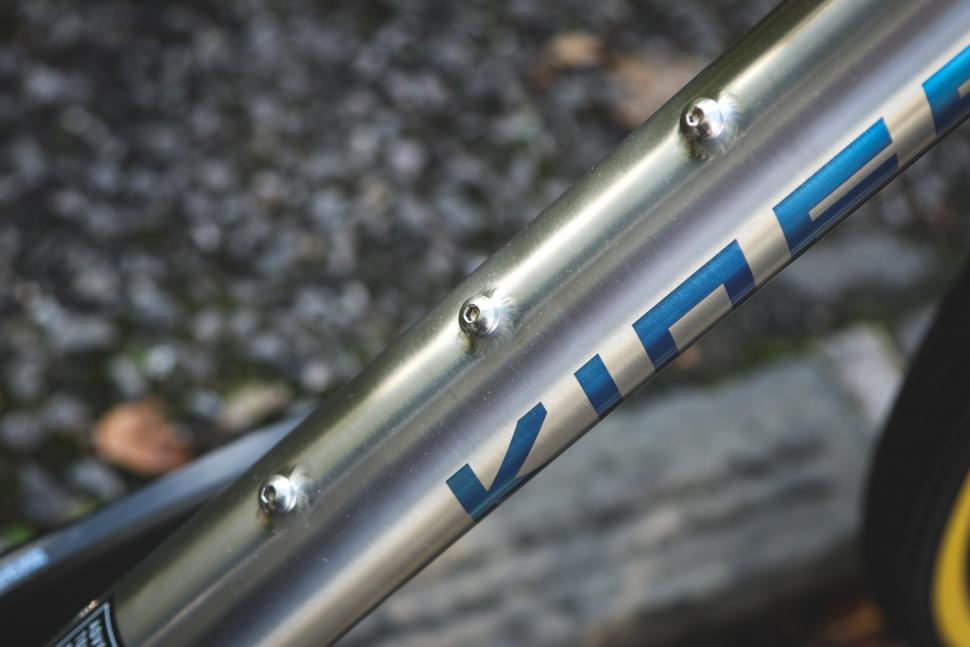


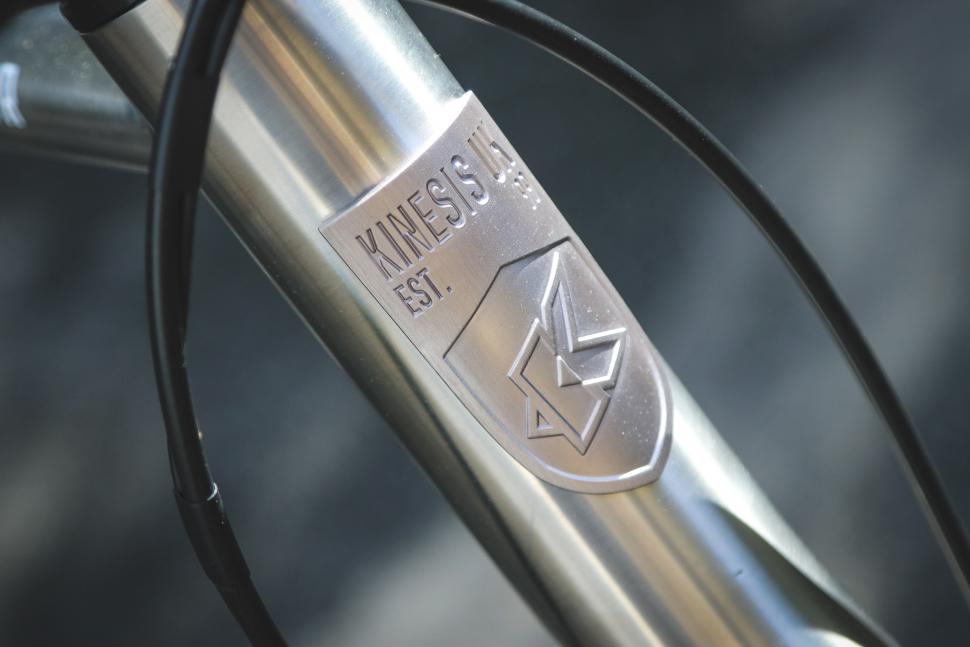
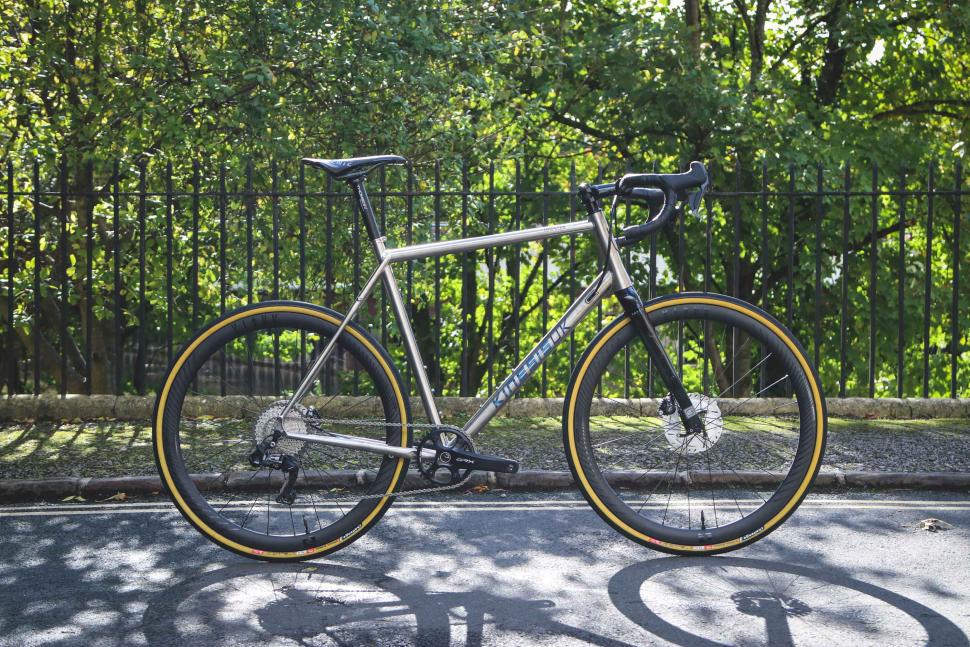
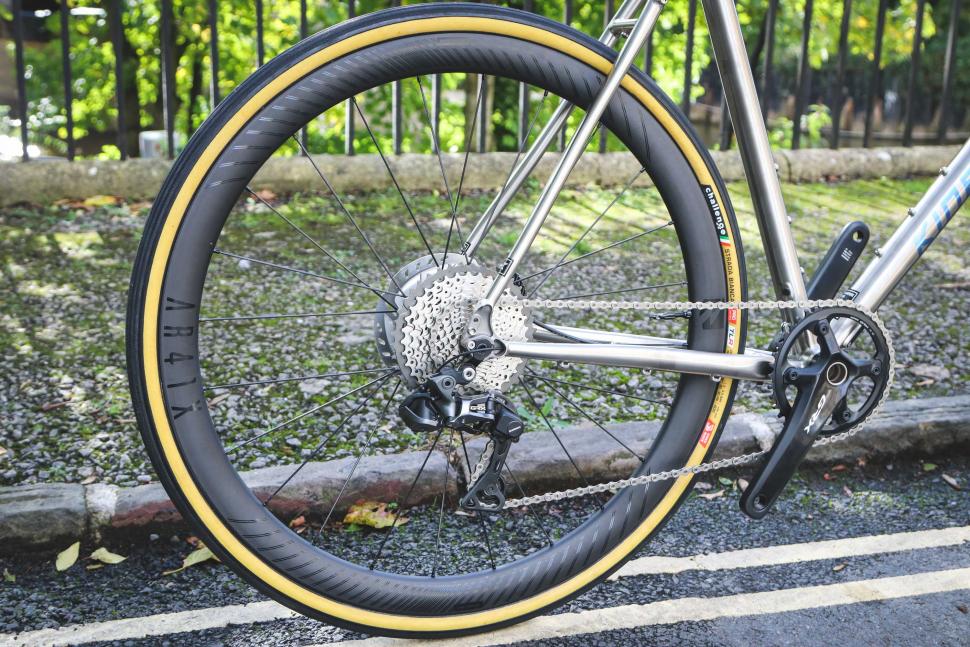

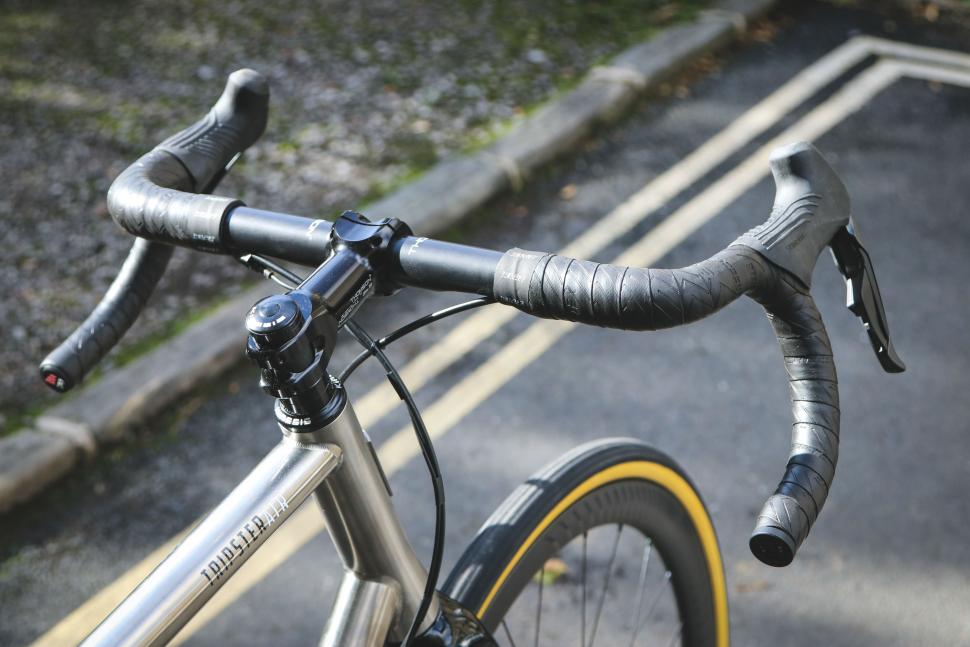


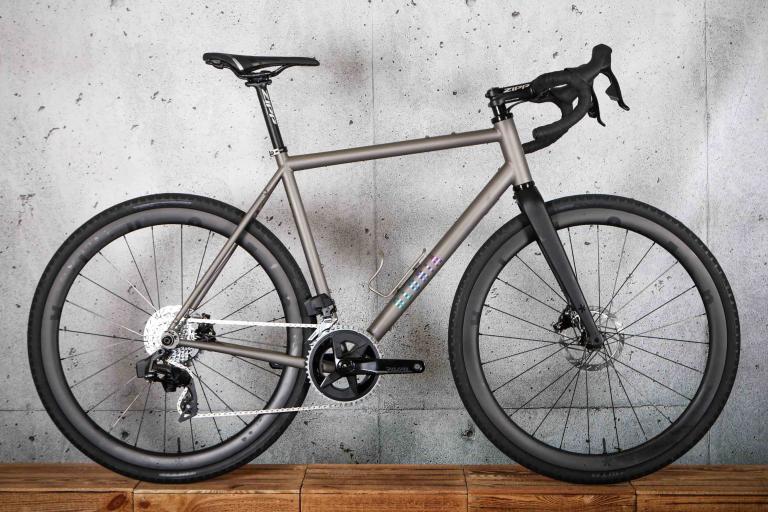

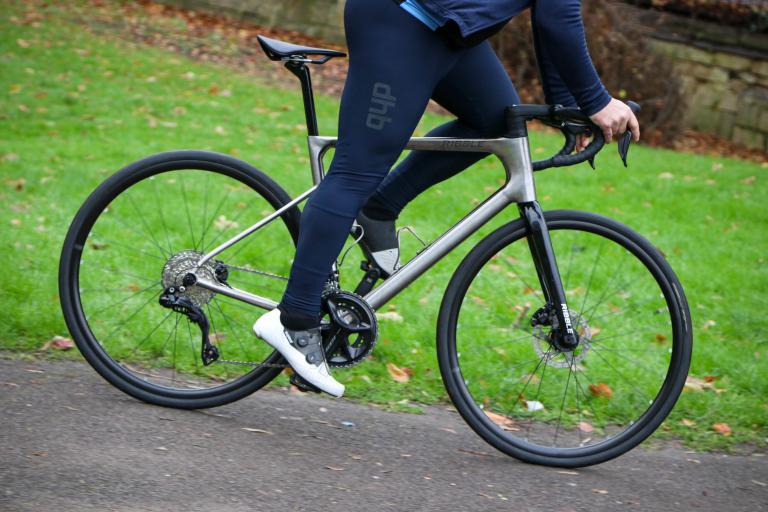
Add new comment
6 comments
How does the Tripster compare to the Reilly Gradient in your opinion?
I have the V2 ATR. Apart from drop out change and head tube emblem, its pretty much identical to V3. I run a triple setup with 50/36/26 gearing. I swap wheels for general riding 40mm tyres or aero 65mm carbon rims for pacey riding.
That seat post diameter is absolutely not an issue when they bundle in the masterpiece.
Was on my list, but the headtube is too tall for my measurements. Love the finish and look of the bike.
Can it take 650b with 47s?
yeah up to 50mm
Loved my V1 and managed PBP and LEL on it. The three things that would I would improve on it have all been addressed: Stack was a bit high for the size, V1 had QRs and not enough tyre clearance for todays tyres. All fixed! The one thing it is not is an out and out speed machine, as you note and the head angle makes it a sit up the hill bike rather than a stomper - in the context of very long distance and gravel these are good things of course as the comfort and stability is exceptional. It's also not a boring bike to ride at all, and on light gravel it really is an entertaining ride. Top bike.